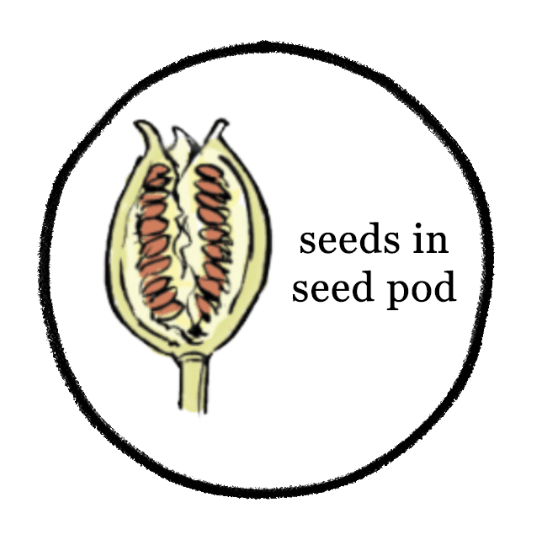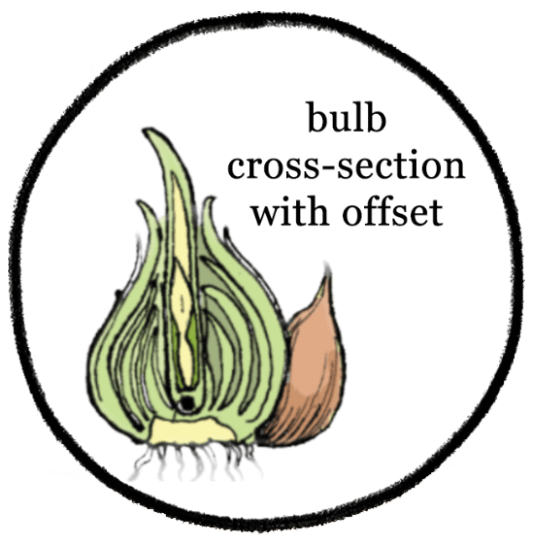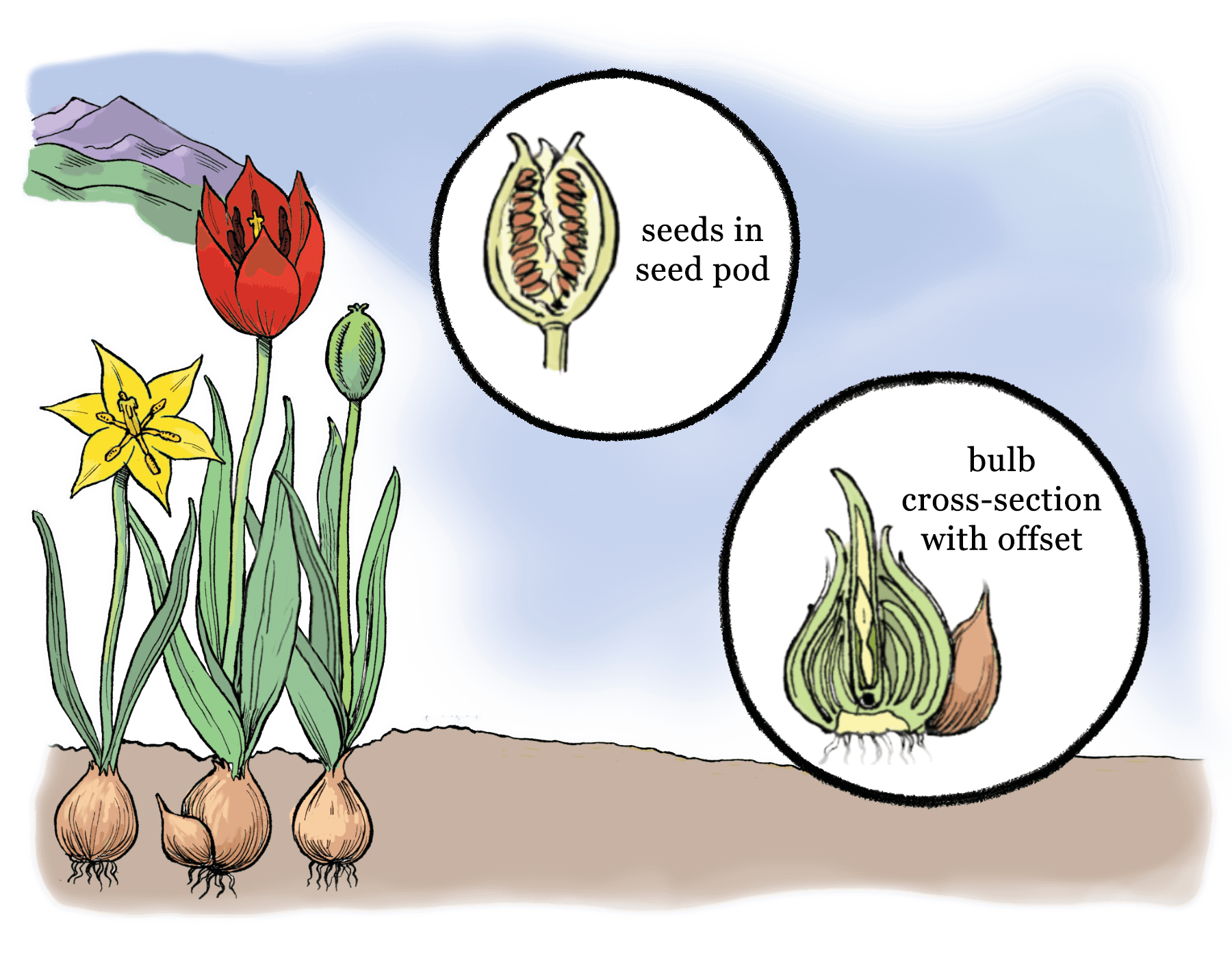Tulip Biology
Text and Illustrations by Tom Chalkley
Wild tulips grow in cool, mountainous habitats that stretch from southeastern Europe to northern China.
Each plant has one long, smooth stem and two to twelve leaves.
The flower has three petals and three sepals that look just like petals. Six stamens hold pollen. The stigma, in the middle, becomes the seed pod.
Most tulips need a climate with a cold winter and a dry summer. Bulbs are planted outdoors in the fall. They need to spend up to 18 weeks at temperatures below 40°. This is called vernalization.


Wild tulips grow in cool, mountainous habitats that stretch from southeastern Europe to northern China.
Each plant has one long, smooth stem and two to twelve leaves.
The flower has three petals and three sepals that look just like petals. Six stamens hold pollen. The stigma, in the middle, becomes the seed pod.
Most tulips need a climate with a cold winter and a dry summer. Bulbs are planted outdoors in the fall. They need to spend up to 18 weeks at temperatures below 40°. This is called vernalization.

Breeders can create new tulip varieties by pollinating one existing variety with pollen from another type.
The seeds that result will be hybrids, with a mixture of the parents’ genes.


